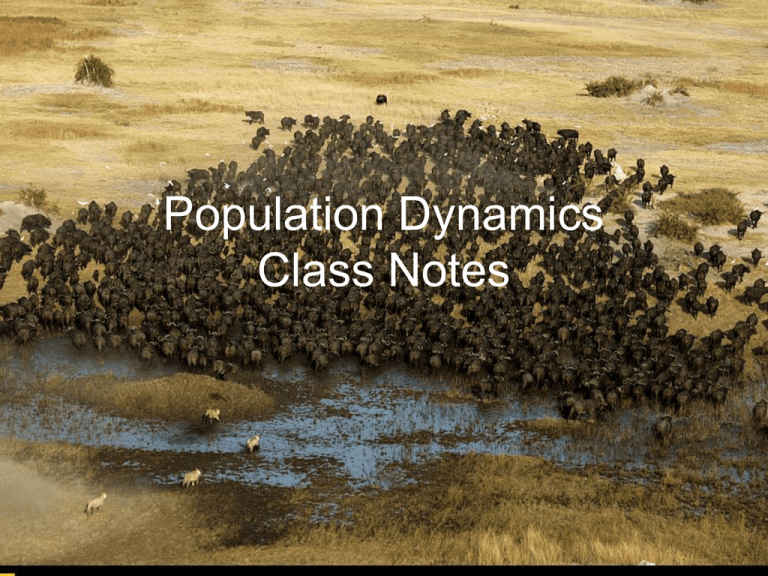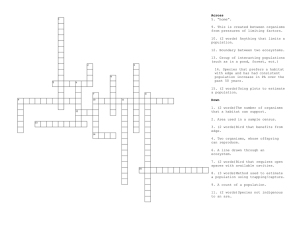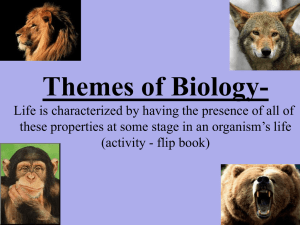Population Dynamics Class Notes
advertisement

Population Dynamics Class Notes 3 Population Characteristics 1. Population density – number of organisms per unit area 3 Population Characteristics 2. Spatial distribution – based on dispersion, which is the spacing pattern of a population within a certain area. a. Uniform b. Clumped c. Random What do the 3 distribution types look like? 3 Population Characteristics 3. Population Ranges – organisms are able to live only in certain habitats Ex:The iiwi only lives on the Hawaiian islands. Population-Limiting Factors 1. Density-independent factors – any factor that does not depend on the density of a population – – – Typically abiotic Natural weather events – tornado, tsunami, drought Results of human activities – pollution Population-Limiting Factors 2. Density-dependent factors – any factor that depends on the population density – Typically biotic – Disease – spreads easily in dense populations – Competition – limited resources – Parasites-parasites spread like disease Review 1. The Black Death killed 75 million people at the beginning of the 20th century. Which size was the population most likely at that time? a. Small population, spread out b. Small population, close together c. Large population, spread out d. Large population, close together d. Large population, close together Review 2. Which of the following is an example of a density-independent factor? More than one is correct. a. Flood b. Parasites c. Deforestation d. Competition A and C Population Growth Rate • To compute how fast a population is growing, these must be known: – Birth rate – Death rate – Immigration: when organisms come into a population – Emigration: when organisms exit a population Models for Population Growth 1. Exponential Growth Model – population growth with no environmental limits • Unlimited resources – food, space, mates Exponential Growth • Lag phase – slow growth period • J-shaped curve – exponential growth J-curve Lag phase Models for Population Growth 2. Logistic Growth Model – population growth slows, birth rate is less than death rate • S-shaped curve Lag phase Carrying capacity Logistic Growth • Carrying capacity – the maximum number of organisms an environment can support longterm C.C.is limited by the resources available. This model explains why and how populations stabilize. Review 3. What is emigration? When organisms exit or leave a population Review 4. Which model – exponential or logistic – is more realistic for a population? Logistic – typically resources are limited in an environment R-strategists Characteristics of R-strategists: • Small organisms • Short lifespan • Produce many offspring • Expend little energy to raise offspring R-strategists Examples K-Strategist Characteristics of K-strategists: • Larger organisms • Longer life span • Produces few offspring • Time is invested in care of young K-Strategist Examples




